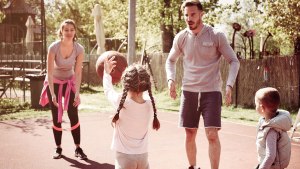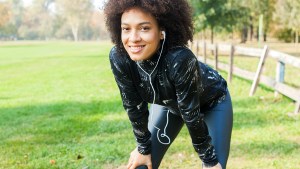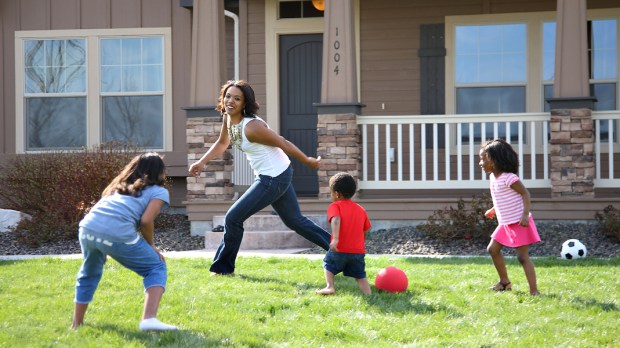With most schools around the nation resuming learning remotely rather than in person, both teachers and parents are scrambling to try and ensure that their childrens’ education doesn’t suffer. Many subjects may naturally fall by the wayside, such as art, music, and theater. Physical education is often lumped in with these classes as it’s widely (and erroneously) considered the least important among them. In fact, learning and retention can’t exist without regular, intense physical activity.
So while it’s unlikely that remote PE instruction will be part of your child’s distance-learning program this fall, prioritizing fitness is absolutely the most important thing you can do to help your child succeed in learning — whether they’re learning remotely or in person. Here’s a quick and easy guide to why, when, and how to make PE a priority while distance learning.
1Why: Miracle-Gro for the brain
By now, most of us are familiar with the relationship between exercise and mental health—particularly the way exercise regulates our emotions through its effects on dopamine and seratonin, two key neurotransmitters. Exercise boosts and balances these neurotransmitters, which are responsible for carrying signals across the neural synapses in the brain.
Learning, however, requires more than just signal transmission—to learn, your brain must strengthen the affinity between neurons themselves. Neurons are like a tree, with synapses instead of branches. The more activity in the synapses, the stronger the attraction, and the easier it is for the signal to fire and make the connection. If the firing continues, genes inside the nucleus begin to build, constructing both new synapses and creating new neurons.
But genes can’t build something from nothing. They need a specific protein called brain-derived neurotropic factor, or BDNF. BDNF builds and maintains the structure of the brain itself, while fostering new growth and protecting neural synapses. But BDNF doesn’t just float freely through our brains, ready to build. Our bodies actually produce BDNF during exercise, especially rigorous exercise, when our heart rates reach 80-90% of our max cardiovascular capacity. The harder the workout, the higher the heart rate, the bigger the boost in BDNF — and the more capacity your brain has for learning and retention.
Simply put, it’s practically impossible to learn and retain knowledge in a sedentary state. Exercise is like a superpower. It literally fills the human brain with Miracle-Gro.

Read more:
How to get your kids to exercise with you
2When: Zero-Hour
BDNF is produced during physical activity, but it’s released into the brain during deep REM sleep to strengthen neural structures and protect synopsis. Essentially, sleep locks in the learning done during the day and clears out the short term memory, leaving your brain more than just refreshed — in the morning, your brain is way more neuroplastic (and fantastic!).
That’s why starting the day with rigorous physical activity is the best possible way to set the stage for learning, because it stimulates the production of both BDNF and neurotransmitters during prime neuroplasticity hours. Don’t worry about eating first, unless exercising on an empty stomach makes your kids sick. There’s a plethora of bonus benefits that come with exercising in a fasted state!
But do be prepared to replenish your kids’ bodies and brains with protein, healthy fats, and carbs directly afterward. And I hate to say it, but to maximize the benefits of zero-hour PE, they should start working on their hardest subject as soon as possible. Yes, I know they’ll be sweaty and stinky, but it’ll be worth it. Trust me. And look on the bright side — getting your kids (and yourself!) outside in the early morning means you’ll get PE done well before the heat of these late-summer days sets in.
3How & What: Anything makes your heart race!
So how exactly do you implement the magic of brain-growing zero hour PE? That’s the fun part—however you want! If your kids like to run, let them run. But if they hate running, branch out. Try biking, rowing, paddle boarding … heck, one of the most effective ways to get a kid’s heart rate up is by playing Dance Dance Revolution. And if you don’t believe me, go spend 5 minutes playing — it’ll all come rushing back, I promise. Just remember that the goal is to get the heart rate up and keep it up, so traditional PE activities like playing HORSE or practicing a tennis swing won’t cut it.
If your kids are resistant, one good option is to gamify PE with heart rate monitors. Make it a family contest and create some kind of incentive for the highest heart rate of the day. If heart rate monitors aren’t an option for your family, keep in mind that actual exertion levels often don’t match our perceived rate of exertion. Often the slowest kids to finish a mile run are the ones working the hardest, so resist the temptation to judge heart rate based on performance. Instead, try less subjective methods like the five-word test. If your kids can say five words, It’s unlikely their heart rate is near max capacity, so encourage them to push harder. On the other hand, if they’re gasping for air and can barely speak, they’re doing it right. Praise them to the heavens and make sure they know that huffing and puffing is NOT a negative reflection of their fitness, but the sign they’ve successfully reached their goal.
And who knows–maybe prioritizing PE for your kids this fall will have a ripple effect on your whole family. You might just decide to do something crazy, like sign up for family taekwondo or a 5K race. If so, let’s hang out, because you’re my people!

Read more:
The best kinds of exercise to boost your immune system

